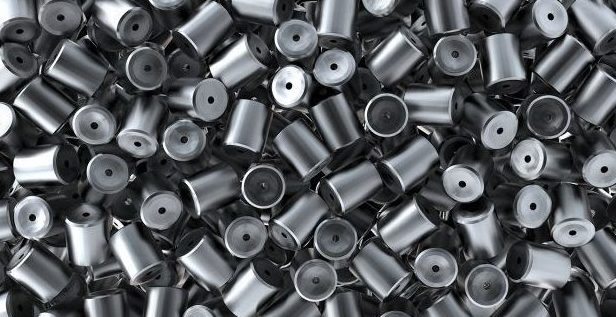- Nuclear case study Sandra
Modelling nuclear waste contamination
Several years ago, Sweden’s national nuclear energy company, SKB, identified a suitable site for the country’s repository for spent nuclear waste fuel at Forsmark, 200 km north of Stockholm.
To obtain a permit from the Swedish Government for the site, SKB needed to provide a report to the government on all aspects of the site and its storage proposition, including predictions as to how long any nuclear waste would remain safe.
The safety assessments contained in the report included what might happen in the ‘worst case scenario’; where fluid, despite the outer barriers, might reach the nuclear waste, leading to contamination of the surroundings.
Part of that assessment drew on research led by Professor Sandra Piazolo, Professor in Structural Geology and Tectonics at the University of Leeds, in a programme called Delta-Min, funded by the EU’s Initial Training Network. The aim of the programme was to better understand the fundamentals of how minerals are dissolved, transported and deposited, by coordinating the work of European industrial and academic experts working in different environments but in related fields.
Professor Piazolo began working closely with SKB’s spent nuclear fuel research team, including research coordinator Lena Zettertroem Evins.
Professor Piazolo says: “Previously there had been a notable discrepancy between experiments on this scenario done in the laboratory, and experiments done outside the lab in the natural world. The lab data has tended to indicate that nuclear materials will break down and dissolve into water much faster than they actually do in the real world.”
But for SKB, who needed to report on how much time it would take nuclear waste to potentially contaminate its surroundings in case of water ingress, accurate lab data was essential.
The company’s proposed storage model involves sealing nuclear waste – typically in the form of uranium oxide pellets – in copper canisters. The canisters are then encased in Bentonite clay and buried in a system of tunnels about 500 metres deep in the solid bedrock.

Uranium oxide pellets.
More realistic experimental variants
In collaboration with Professor Neil Hyatt and Dr Martin Stennett from Sheffield University’s Department of Materials, Science and Engineering, the team prepared pellets that were as analogous as possible to the real uranium oxide pellets proposed by SKB for nuclear waste deposits, using calcium fluorite, a non-radioactive material that has a similar crystalline structure to uranium oxide.
This enabled Professor Piazolo and her fellow researcher PhD student Jose R. A. Godinho to commence their experiments on the material. While the standard experimental procedure is to crush the material, add water and then measure how much material has been transferred to the fluid, the researchers didn’t crush the fluorite but used larger pieces instead, simulating the actual pellets that would be used.
The rate of dissolution was reduced.
Professor Piazolo said: “If the fluorite is crushed, the surface sites are very reactive. You could describe it as very ‘energetically unhappy’, so it reacts much faster when mixed with water. Crushing does not generally happen in nature and so our more realistic scenario helped to explain a slower rate of dissolution.”
The researchers also took a different approach to the fluid used for the experiments. While previous lab experiments regularly replenished the water used, in all likelihood the fluid involved in a worst-case scenario would be ground water, which is not refreshed regularly. The team found that not replenishing the water also reduced the rate of dissolution.
Safer than believed
From these experiments, the team developed a numerical model that could more accurately predict the speed of dissolution rates. This data model formed part of the information included in the final report from SKB seeking approval for the Government’s permit for the Forsmark site, which was put forward for review in the autumn of 2017 and in January 2018.
Professor Piazolo said: “There are so many different variants in a project of this scale, and this is just one part of the jigsaw. In the absolutely ‘worst-case’ scenario, even if all the surrounding containers are breached, the situation is not as bad as previously believed. Our data helped to show that nuclear waste disposal, as Sweden is planning it, is actually safer than thought a decade ago.”
